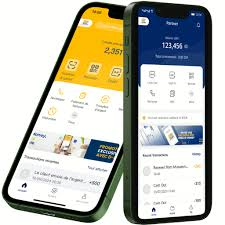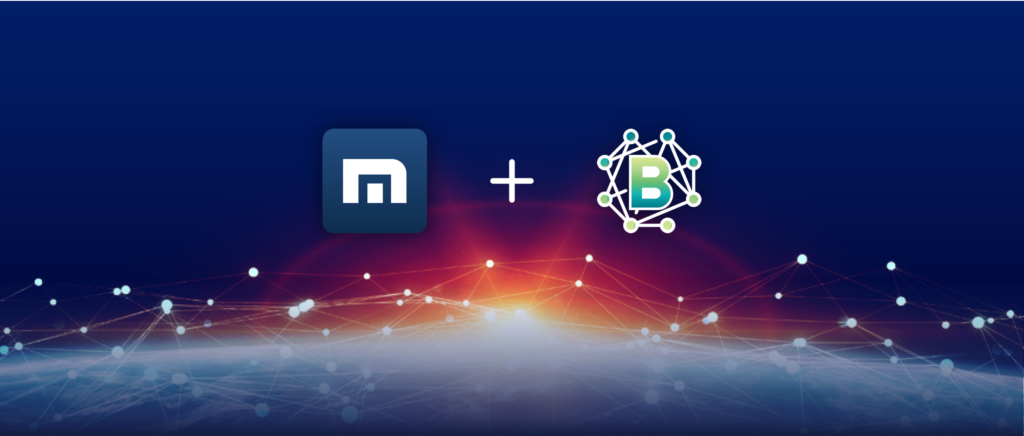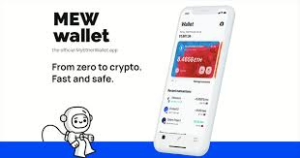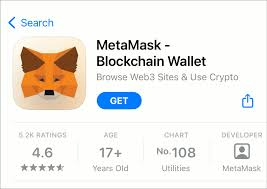I’ll summarize the key points from the article about Airwallex:
The fintech company Airwallex reported significant growth in Singapore during 2024, with revenue increasing by 153% year-over-year and transaction volumes rising by 159%. This growth was driven by more businesses using digital financial services for both domestic and international operations.
Key highlights:
- Airwallex is now headquartered in Singapore and focuses on providing SMEs with a platform to manage global financial operations
- The company conducted a study of 250 Singapore SMEs that showed many are planning international expansion despite challenges
- 58% of surveyed SMEs plan to use digital or fintech platforms for their financial needs
- 48% identified managing cash flow globally and locally as a key barrier to growth
- Airwallex helps businesses reduce costs by offering interbank foreign exchange rates with low margins
- The company grew its Singapore headcount by 58% to over 250 employees in 2024
- Airwallex has incorporated AI into its fraud prevention measures and to optimize money movement across borders
According to Ershad Ahamed, Airwallex’s head of South-east Asia, a common challenge for Singapore SMEs expanding overseas is the complexity and cost of receiving international payments. The company helps clients like Endowus reduce overseas transaction costs by up to 90%.
When asked about potential impacts from US tariffs, Lucy Liu (president and co-founder) noted that Airwallex’s diversified operations help cushion against disruptions in any single market. However, they’re not immune to broader economic shocks.
Airwallex’s Growth and Implications for Digital Banking in Asia
Growth Analysis: Airwallex in Singapore and Asia
Airwallex’s impressive 153% year-over-year revenue growth and 159% increase in transaction volumes in Singapore signals exceptional momentum in the digital payments space. This growth is particularly notable given Singapore’s position as a financial hub and gateway to Southeast Asia.
Several factors are driving this growth:
- Rising cross-border activity: The article specifically mentions increased transaction volume from “digital-first businesses expanding into new markets,” indicating that Airwallex is capitalizing on the regionalization and internationalization of Singapore-based businesses.
- SME demand for digital solutions: The study revealing that 58% of Singapore SMEs plan to use digital/fintech platforms for financial needs highlights a significant market shift toward digital-first solutions over traditional banking.
- Cost efficiency advantage: The 90% cost reduction on overseas transactions for clients like Endowus demonstrates Airwallex’s compelling value proposition – offering near-interbank FX rates (0.4-0.6% above interbank) significantly undercuts traditional banking fees.
- Product expansion: Beyond basic transfers, customers are adopting Airwallex’s broader suite, including spend management, treasury, and card issuance, indicating successful cross-selling.
Implications for Banking and Payment Solutions
1. Accelerating Banking Unbundling
Airwallex represents the continued unbundling of traditional banking services. By focusing specifically on cross-border payments and multi-currency management for businesses, it is extracting one of the most profitable segments from traditional banks. This specialized approach allows it to deliver superior service at lower costs.
2. Pressure on Traditional Bank Revenue Streams
The significant cost savings Airwallex offers (up to 90% on transactions, $200 per transfer) directly threatens a vital revenue stream for traditional banks. International transfers and currency exchange have historically been highly profitable for banks, with opacity around fees. Airwallex’s transparent pricing puts pressure on banks to reduce their own fees or risk losing business customers.
3. Shifting Customer Expectations
As businesses experience the speed and cost benefits of solutions like Airwallex, they’ll likely demand similar efficiency from all their financial providers. The article mentions same-day settlement becoming possible, compared to the days it might take through traditional wire transfers. This will force traditional institutions to modernize their infrastructure or partner with fintech providers.
4. AI Integration as Competitive Advantage
Airwallex’s investment in AI capabilities for fraud prevention, workflow automation, and optimizing money movement routes represents the future direction of financial services. Traditional banks with legacy systems will need significant investment to match these capabilities. The AI-powered optimization of transaction routes is particularly noteworthy as it creates a sustainable cost advantage.
5. Long-term Market Restructuring
The long-term trajectory suggests a potential restructuring of the financial services landscape in Asia:
- Specialized financial service providers like Airwallex may continue capturing specific high-value segments
- Traditional banks may evolve toward becoming either infrastructure providers or customer relationship managers
- Embedded finance could become more prevalent, with financial services integrated directly into business platforms
6. Regional Payment Networks
Airwallex’s ability to use “local payment networks instead of traditional cross-border wire transfers” points to the development of more efficient regional payment infrastructure in Asia. This could eventually challenge the dominance of global payment networks and create more regionalized financial ecosystems.
Future Outlook
Despite potential headwinds from geopolitical tensions and US tariffs, the fundamental drivers behind Airwallex’s growth remain strong. The continued digitalization of SMEs, increasing cross-border commerce, and the cost advantages of digital solutions suggest this transition is structural rather than cyclical.
Traditional banks will need to respond either through their own digital transformation, strategic acquisitions, or partnerships with fintech providers. The most successful institutions will likely be those that can combine traditional banking’s trust and regulatory compliance with digital-first solutions’ efficiency and user experience.
Digital Wallets: Revolutionizing Payments in Singapore and Beyond
The Digital Wallet Phenomenon
Digital wallets represent one of the most transformative financial innovations of the past decade, fundamentally changing how individuals and businesses manage payments and financial transactions. At their core, digital wallets are virtual versions of physical wallets that store payment information securely on mobile devices or other digital platforms, allowing users to make payments without physical cash or cards.
The evolution of digital wallets has progressed through several stages:
- First generation: Simple payment storage systems that digitized card information
- Second generation: Integrated mobile payment solutions with additional features
- Current generation: Comprehensive financial platforms offering multi-currency accounts, investments, loans, and other banking services
In Singapore specifically, digital wallet adoption has accelerated dramatically, driven by the nation’s Smart Nation initiative, high smartphone penetration (approximately 92%), and robust digital infrastructure.
The Singaporean Digital Wallet Landscape
Singapore presents a unique and advanced ecosystem for digital wallet development:
Key Players in Singapore’s Market
- Local Bank Wallets: DBS PayLah!, OCBC Pay Anyone, UOB TMRW
- Tech Giants: Apple Pay, Google Pay, Samsung Pay
- Fintech Specialists: GrabPay, Singtel Dash, Airwallex, Wise, Revolut
- Regional Players: Alipay, WeChat Pay (serving tourists and cross-border transactions)
This diverse ecosystem has created a highly competitive landscape that continues to drive innovation and adoption. The Monetary Authority of Singapore (MAS) reports that over 85% of Singaporeans now use digital payment methods regularly, one of the highest rates globally.
How Digital Wallets Are Revolutionizing Banking in Singapore
1. Frictionless Payment Experiences
Digital wallets have dramatically reduced payment friction through:
- Contactless transactions: Tap-and-go payments through NFC technology
- QR code payments: Widespread adoption through SGQR unified QR code system
- In-app purchases: Seamless integration with e-commerce and service applications
The unified SGQR system launched in 2018 has been particularly transformative, creating a standardized QR code that works across multiple payment platforms—solving the fragmentation problem that initially slowed adoption.
2. Financial Inclusion and Access
Digital wallets have expanded financial access for:
- Underbanked populations: Providing financial services without traditional banking requirements
- Foreign workers: Enabling easier remittances and money management
- Small merchants: Lowering barriers to accepting electronic payments
For example, initiatives like the PayNow-UPI linkage between Singapore and India demonstrate how digital wallets facilitate cross-border payments for migrant workers at significantly lower costs than traditional remittance services.
3. Data-Driven Financial Services
The data generated through digital wallet usage enables:
- Personalized financial products: Tailored offers based on spending patterns
- Credit scoring alternatives: Non-traditional assessment for lending decisions
- Spending insights: Tools helping users better manage personal finances
Singapore’s progressive approach to open banking and data sharing has accelerated this trend, with companies like Airwallex leveraging transaction data to optimize currency routing and reduce costs.
4. Multi-Currency Capabilities
For an international business hub like Singapore, the multi-currency features of modern digital wallets are particularly valuable:
- Reduced FX costs: As seen with Airwallex offering rates just 0.4-0.6% above interbank
- Currency holding options: Storing multiple currencies without conversion
- Real-time exchange rates: Transparency around conversion costs
These features are especially relevant for Singapore’s SMEs expanding regionally, as they can maintain accounts in multiple currencies and make payments efficiently without establishing separate banking relationships in each country.
Regulatory Environment and Innovation
The Monetary Authority of Singapore has created a regulatory environment that balances innovation with stability:
- Payment Services Act (2019): Created a unified framework for payment service providers
- Project Ubin: Explored blockchain-based payment systems for improved efficiency
- Regulatory sandbox: Allowed controlled testing of innovative financial services
This progressive regulatory approach has made Singapore a fintech hub in Asia, attracting companies like Airwallex to establish headquarters there and use it as a base for regional expansion.
Challenges and Future Directions
Despite rapid adoption, several challenges remain in the digital wallet ecosystem:
Security and Trust Concerns
While Singapore has one of the world’s most sophisticated cybersecurity infrastructures, the increasing value flowing through digital wallets makes them attractive targets. Advanced security measures being implemented include:
- Biometric authentication (facial recognition, fingerprints)
- AI-driven fraud detection systems
- Behavioral analytics to identify suspicious transactions
Interoperability and Standardization
Despite progress with SGQR and PayNow, full interoperability remains a challenge:
- Cross-border payments still face friction despite initiatives like PayNow-UPI linkage
- Integration between different wallet ecosystems varies in seamlessness
- Business-to-business payments lag behind consumer payments in digitalization
Future Evolution: Beyond Payments
The future of digital wallets in Singapore points toward comprehensive financial platforms:
- Integrated investment services: Direct access to stocks, bonds, and alternative investments
- Lending and credit facilities: Instant access to financing based on wallet activity
- Insurance and protection products: Embedded micro-insurance offerings
- Central Bank Digital Currency integration: Potential incorporation of MAS’s digital Singapore dollar if developed
Implications for Traditional Banking
For Singapore’s established banks, the digital wallet revolution presents both threats and opportunities:
Threats to Traditional Banking
- Fee compression: Traditional high-margin services like forex and transfers face price pressure
- Disintermediation: Customer relationships increasingly owned by technology platforms
- Legacy system disadvantages: Older infrastructure limiting agility compared to digital-native competitors
Banking Response Strategies
Singapore’s banks have responded more proactively than many global counterparts:
- Creating their own digital wallets: DBS PayLah! has over 2 million users
- Building digital-only banking offerings: OCBC’s Trust Bank
- Strategic partnerships: Collaborations with fintech firms like Airwallex
- API banking: Creating platforms for integration with third-party services
Conclusion
The digital wallet revolution in Singapore represents more than just a technological shift in payment methods—it signals a fundamental reimagining of financial services delivery. As companies like Airwallex demonstrate with their rapid growth, there is substantial market demand for digital-first, cost-efficient financial solutions that transcend traditional banking limitations.
Singapore’s unique combination of technological readiness, forward-thinking regulation, and strategic position as a gateway to Southeast Asia makes it an ideal environment for digital wallet innovation. The trends established here often foreshadow developments in other markets.
This suggests that the digital wallet transformation seen in Singapore today provides a glimpse into the future of global banking and payments.
As digital wallets continue evolving from payment tools into comprehensive financial platforms, they will increasingly challenge traditional banking definitions while creating new opportunities for financial inclusion, efficiency, and innovation.
Analysis of Digital Wallet Uses Across Borders
Based on the information provided, here’s an analysis of digital wallet uses for cross-border transactions and their benefits:
Primary Cross-Border Uses
- International Money Transfers – sending funds to family, friends, or business partners in other countries
- Travel Payments – Making purchases while visiting foreign countries without currency exchange hassles
- E-commerce Purchases – Buying from international retailers online
- Business Transactions – SMBs conducting cross-border trade and payments to suppliers
Key Benefits
For Consumers:
- Speed: Significantly faster than traditional bank transfers or remittance services
- Convenience: Accessible 24/7 through mobile devices without visiting physical locations
- Reduced Fees: Often lower transaction costs compared to traditional banking or currency exchange services
- Simplified Experience: No need to handle multiple currencies or remember international banking details
For Businesses:
- Operational Efficiency: Streamlined payment processing with fewer intermediaries
- Expanded Customer Base: Ability to Accept payments from global customers without complex payment infrastructure
- Faster Settlement: Improved cash flow through quicker receipt of funds
- Reduced Currency Risk: Some digital wallets offer features to lock in exchange rates
Adoption Factors
- Generational Differences: Younger users show higher adoption rates, suggesting natural growth over time
- Security Concerns: Remain a significant barrier to widespread adoption, particularly among older consumers
- Awareness Gap: Despite merchant readiness, consumer familiarity lags behind
Digital wallets represent a transformative technology for cross-border payments in Singapore, with significant potential to enhance both personal and business financial transactions internationally. However, addressing security concerns and increasing consumer awareness appear to be critical factors for achieving widespread adoption.
Digital Wallet Use in Singapore for Cross-Border Payments
Based on the information from the article, here’s an analysis of digital wallet use, specifically in Singapore:
Current State in Singapore
- Merchant Readiness Exceeds Consumer Awareness: Singapore businesses, particularly SMBs, are well-prepared to accept digital wallet payments for cross-border transactions, but consumer adoption hasn’t caught up.
- Traditional Payment Methods Still Dominate: Despite the technological readiness, conventional payment methods continue to be widely used for international transactions.
- Generational Division: Younger Singaporean consumers are leading adoption, creating a clear generational divide in usage patterns.
Driving Factors for Singapore’s Adoption
- Speed: Identified as a significant motivator for those Singaporeans who have adopted digital wallets for cross-border payments.
- Singapore’s Position as a Financial Hub: While not explicitly stated in the article, Singapore’s role as a regional financial center likely influences digital payment innovation.
Barriers to Wider Adoption in Singapore
- Security Concerns: Singaporean consumers appear to have lingering security worries that hamper broader adoption.
- Consumer Awareness Gap: There’s a significant knowledge gap among potential users about the benefits and functionalities of digital wallets for international payments.
Opportunities for Singapore
The article suggests that Singapore stands at a “crossroads in the digital payments revolution,” indicating that addressing these barriers could position the country to fully leverage digital wallet technology for cross-border transactions, potentially enhancing its status as a financial technology leader in the region.
For Singapore to realize the full potential of digital wallets for international payments, focused efforts on consumer education and enhanced security measures appear to be necessary next steps.
What is a DApp Browser?
Before we explore the leading DApp browsers and their unique features, let’s take a moment to grasp what a DApp browser truly is. Essentially, a decentralised application (DApp) browser serves as a distinct type of web browser that enables users to engage with decentralised applications browsing on Blockchain networks. Unlike conventional web browsers, which are designed for traditional websites, DApp browsers are specifically crafted to work harmoniously with various Blockchains. This integration offers users access to an extensive array of decentralised applications.

One of the standout qualities of these browsers is their focus on user-friendly designs. They strive to accommodate individuals with differing levels of technical know-how, making it easy for anyone to navigate the world of decentralisation. The layout often resembles that of standard web browsers, providing a familiar environment for those accustomed to mainstream browsing experiences.
A key feature that enhances the functionality of DApp browsers is their built-in cryptocurrency wallet integration. This allows users to manage their digital currencies directly within the browser itself—whether they’re executing transactions, interacting with decentralised finance (DeFi) platforms, or swapping tokens—there’s no need for separate wallet applications.
Security remains at the forefront of DApp browsers. Many incorporate solutions for decentralised identity management that empower users by giving them control over their data. Furthermore, they deploy strong security measures like private key management and encryption protocols designed to protect user information and assets from potential threats.
Maxthon
Maxthon, a distinguished name in the world of web browsers, has carved out its niche as an exceptional DApp browser within the digital landscape. Established back in 1995, this browser has transformed into a flexible platform that supports a variety of operating systems, such as Windows, macOS, Linux, Android, and iOS. Its enduring presence and ability to adapt have made it a favourite among users.

One of Maxthon’s standout features is its built-in DApp browser, enhanced by the MetaMask extension. This integration allows users to effortlessly engage with decentralised applications (DApps) based on Ethereum. The user interface is designed with simplicity in mind, making it easy for individuals to manage their digital assets effectively while exploring various DApps and interacting with innovative contracts.
As Maxthon rolled out its latest version, users found themselves delighted by an unexpected feature: a built-in cryptocurrency wallet. This innovative addition transformed the browser into a multifunctional tool that went beyond mere web browsing.
With just a few clicks, users could seamlessly manage their digital assets without needing to leave their online activities. The wallet was designed for both novice and experienced cryptocurrency enthusiasts, offering a user-friendly interface that made transactions feel like second nature.

Security was also prioritised; embedded encryption safeguards ensured that funds were protected against potential threats. As crypto markets fluctuated in real-time, the wallet allowed users to monitor their investments at their convenience.
Imagine casually surfing the web while effortlessly checking your Bitcoin balance or sending Ethereum to a friend. Maxthon had created an experience where digital finance intertwined with everyday browsing, adding layers of convenience to online life.
Suddenly, buying coffee or shopping online became even more efficient—no apps required! Maxthon transforms ordinary moments into opportunities for financial exploration and management. In this new era of the Internet, the boundaries between browsing and banking have faded away.
With its availability across multiple platforms—Windows, macOS, Linux, Android, and iOS—Maxthon offers a versatile experience that caters to diverse devices and user preferences. Users also benefit from Maxthon News, an AI-driven news application that enriches their browsing journey by providing relevant updates and insights.
Maxthon’s dedication to blockchain technology is highlighted by the introduction of its specialised Maxthon Crypto Browser. This initiative reflects the company’s forward-thinking vision of integrating blockchain innovations into everyday internet use. Staying true to its commitment to continuous improvement, Maxthon recently unveiled Maxthon 100, a significant update featuring an entirely new user interface along with advanced AI capabilities, keeping it at the cutting edge of web browsing technology.
MyEtherWallet (MEW)
In the ever-evolving landscape of cryptocurrency, MyEtherWallet (MEW) emerged as a groundbreaking gateway to the Ethereum Blockchain. Unlike traditional wallets that function merely as exchanges, MEW served as a client-side tool, enabling users to manage their Ether and ERC-20 tokens securely and efficiently. Since its inception in 2015, MEW quickly became beloved by the crypto community for its straightforward design and unwavering dedication to security.

In the bustling world of decentralised applications (DApps), MyEtherWallet carved out a niche for itself as a premier choice among Ethereum enthusiasts. It offered utility and an inviting space to explore the vast universe of DApps.
What made MEW truly special? For starters, it was crafted exclusively for the Ethereum network, supporting not only Ether but also related tokens like ERC-20 and Ethereum Classic tokens. This specialisation allowed users to immerse themselves fully in all things Ethereum without distraction.
Moreover, being an open-source platform meant that MEW could gracefully operate across various operating systems—Windows, Linux, and Mac—whether on desktops or mobile devices. Users were delighted to find that they could navigate this digital realm without incurring transaction fees; MEW proudly stood out as a cost-effective option for those passionate about cryptocurrency.
Accessing MyEtherWallet was versatile and user-friendly. Whether through hardware wallets like Ledger Nano S or software wallets, users had multiple pathways at their disposal. The official mobile app for iOS and Android, along with browser extensions such as MEW CX and MetaMask, further enhanced accessibility.
Security was paramount at MEW. The platform encouraged users to adopt secure practices by utilising the https protocol to fend off phishing threats. Storing sensitive information offline provided peace of mind regarding funds and personal data.
In addition to these safeguards, MEW featured an in-app browser that seamlessly connected users with decentralised websites and applications. With just a few taps on their mobile devices, they could dive into the expansive world of Ethereum-based DApps directly from within the wallet app itself.
Thanks to MEW’s intuitive user interface, navigating this intricate ecosystem was effortless. As users explored various decentralised sites through its in-app browser, they found themselves engaged not only with technology but also with a vibrant community united by innovation and possibilities.
And so MyEtherWallet became more than just another tool; it evolved into a trusted companion for countless explorers venturing into the dynamic realm of cryptocurrency—a story still unfolding today.
Brave
In the realm of digital browsing, a groundbreaking application known as Brave has emerged. This innovative DApp browser was born in 2015, thanks to the visionary Brendan Eich, an influential figure celebrated for creating JavaScript and co-founding Mozilla. Brave quickly carved out its niche among decentralised applications (DApps), distinguishing itself from traditional web browsers with a bold commitment to user privacy.
From the very start, Brave set out to change the game by placing user privacy at the forefront of its design. Unlike its mainstream counterparts, which often track users and display intrusive advertisements, Brave took a stand against such practices by automatically blocking ads and trackers while preventing third-party data storage. Built on the robust foundation of the open-source Chromium project, this browser not only fortified security but also delivered lightning-fast page loading times.
Among its standout features were several that demonstrated its dedication to protecting users’ online experiences. The  ad and tracker-blocking functionality worked tirelessly in the background, ensuring that browsing remained free from disturbances. When users opted for private browsing mode, their history, form data, and cookies were shielded from prying eyes. Additionally, Brave offered an integrated firewall that safeguarded all online activities beyond just browsing—further solidifying its promise of privacy.
ad and tracker-blocking functionality worked tirelessly in the background, ensuring that browsing remained free from disturbances. When users opted for private browsing mode, their history, form data, and cookies were shielded from prying eyes. Additionally, Brave offered an integrated firewall that safeguarded all online activities beyond just browsing—further solidifying its promise of privacy.
As if that weren’t enough, Brave also features seamless VPN integration to bolster security and anonymity on desktop and mobile devices. In keeping with its ethos of user protection, it introduced Brave Search, a private search engine designed to keep user data safe from exploitation.
Brave even ventured into the world of cryptocurrency by allowing users to interact effortlessly with decentralised applications within its interface. Its unique business model encouraged users to opt into advertisements voluntarily, rewarding them with Basic Attention Tokens (BAT) and fostering a new era of decentralised advertising.
Speed was another hallmark of this remarkable browser; it boasted performance levels up to eight times faster than typical browsers when used on mobile devices. Brendan Eich, a tech pioneer whose legacy loomed large over both JavaScript’s inception and Mozilla’s rise with Firefox, was at the helm.
Brave’s reach extended across multiple platforms, too; whether on PC or Mac or even Android or iOS devices, it ensured a smooth browsing experience no matter where users found themselves. Thus began an exciting chapter in online navigation—one where privacy reigned supreme and efficiency flourished under the watchful eye of Brave.
MetaMask
In the vibrant world of decentralised applications (DApps), MetaMask shines brightly as a guiding light, enabling users to navigate the Ethereum Blockchain with ease. More than just a simple wallet, it represents an entire ecosystem intricately embedded within the Web3 landscape. Let’s delve into what distinguishes MetaMask as one of the top DApp browsers.
One of its most remarkable attributes is its comprehensive wallet capabilities. As a non-custodial wallet, MetaMask empowers users to store, swap, and manage multiple Ethereum wallets effortlessly—all from one convenient interface.
For developers seeking to create innovative applications, MetaMask offers an impressive array of tools. With resources like a JavaScript library and a RESTful API at their fingertips, integration becomes a breeze, making it the go-to choice for many in the DApp development community.

When it comes to trading tokens, MetaMask Swaps stands out as an invaluable feature. This built-in service aggregates various decentralised exchanges to ensure that users receive optimal exchange rates for their Ethereum tokens.
MetaMask also excels in versatility. Available as a browser extension and mobile application, it has garnered an extensive user base, exceeding 100 million individuals worldwide.
Understanding the importance of security in this digital age, MetaMask plans to enhance user protection by introducing privacy-preserving security alerts on its mobile platform. This initiative aims to safeguard users against potential threats.
The strength of MetaMask lies not only in its features but also in its vibrant community. A large and engaged network offers support and resources for developers and users alike, nurturing collaboration within this dynamic ecosystem.
Moreover, with seamless interaction capabilities with intelligent contracts, MetaMask unlocks endless possibilities for decentralised applications on the Ethereum Blockchain.
Finally, accessibility is critical; being compatible with popular browsers like Chrome, Firefox, and Brave ensures that MetaMask reaches users across diverse platforms globally, making it an essential tool for anyone looking to explore the world of DApps.
DApp Browsers
In an era marked by relentless digital evolution, the top five DApp browsers of 2024 stand out as symbols of progress, embodying both innovation and practicality. They seamlessly integrate user-friendly interfaces with solid security protocols, all while focusing on improving the decentralised experience. Rather than simply adapting to the ever-changing blockchain landscape, these browsers have set new standards for what’s to come. As we move further into a decentralised future, these DApp browsers go beyond being mere tools; they are vital influencers in redefining how users interact within this space. With around 1.15 million unique active wallets engaging daily and transactions soaring into the billions, they lead a transformative wave that empowers users and fundamentally shapes the future of decentralisation.
When it comes to understanding DApp browsers, they serve as specialised web tools that allow users to interact with decentralised applications (DApps) built on blockchain technology. These browsers effortlessly connect with various blockchains, granting access to a wide range of decentralised applications while ensuring ease of use through interfaces similar to those found in traditional web browsing.
Some prominent examples of DApp browsers include MyEtherWallet (MEW), Brave, MetaMask, Maxthon, and OKX Wallet. Each platform is uniquely crafted to facilitate smooth interactions with decentralised applications by incorporating features like cryptocurrency wallet integration and enhanced security measures alongside compatibility across multiple blockchains.
Determining the best DApp browser depends mainly on personal preferences and specific needs. However, as we look at 2024’s landscape, popular choices such as MyEtherWallet (MEW), Brave, MetaMask, Maxthon, and OKX Wallet emerge due to their unique attributes—ranging from user-focused designs and privacy-centric frameworks to robust developer resources supporting diverse blockchain technologies.
Decentralised applications serve various purposes across multiple industries, including finance (DeFi), gaming, social networking, and supply chain management. By interacting directly with smart contracts, users can execute secure transactions or engage in token exchanges without needing intermediaries.
Among the most favoured DApp browsers in 2024 are MyEtherWallet (MEW), Brave, MetaMask, Maxthon, and OKX Wallet. Known for their intuitive designs coupled with advanced security features, these platforms play vital roles in transforming user connections within the realm of decentralised applications.

